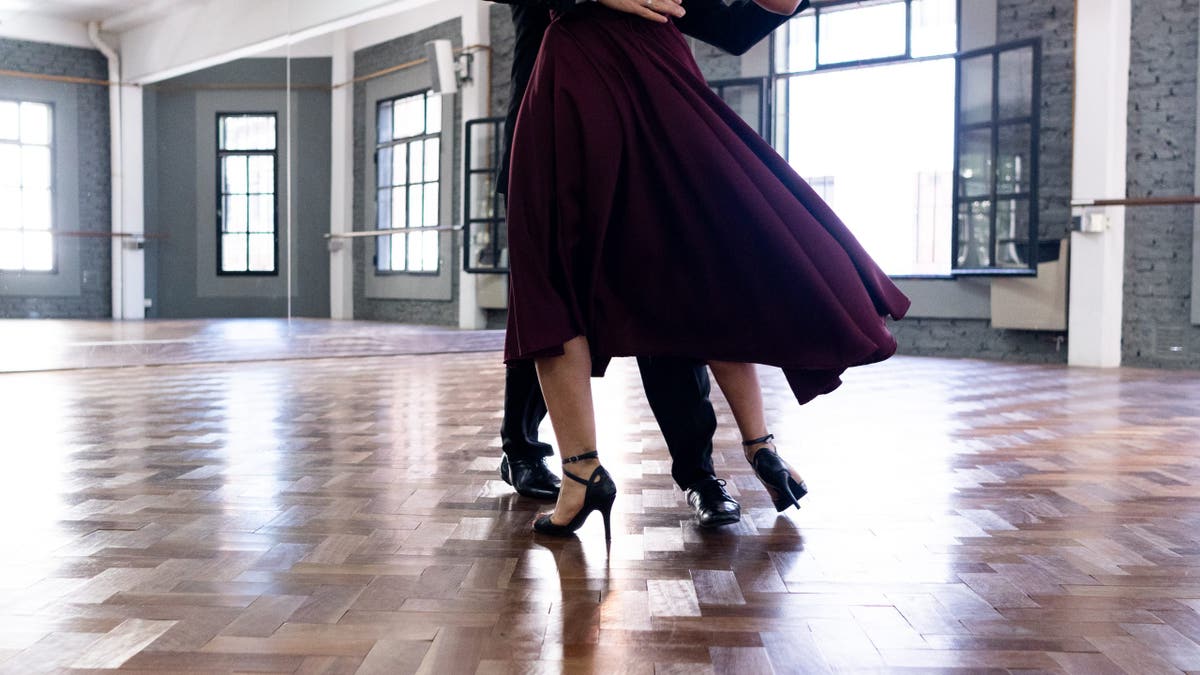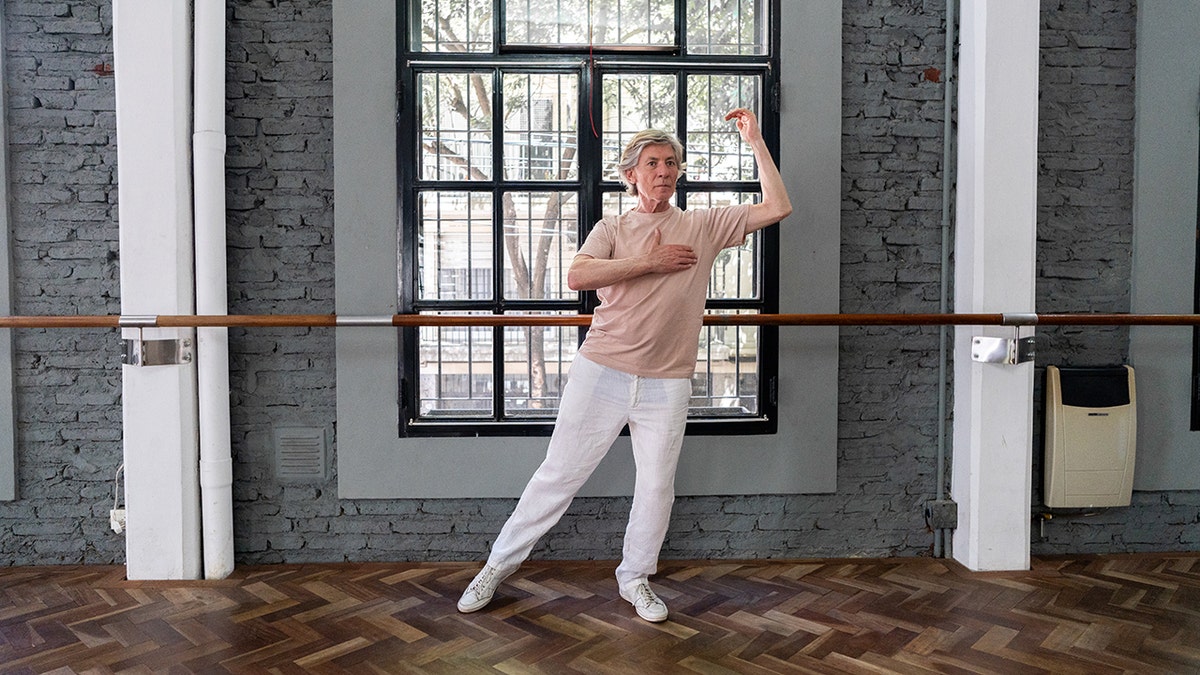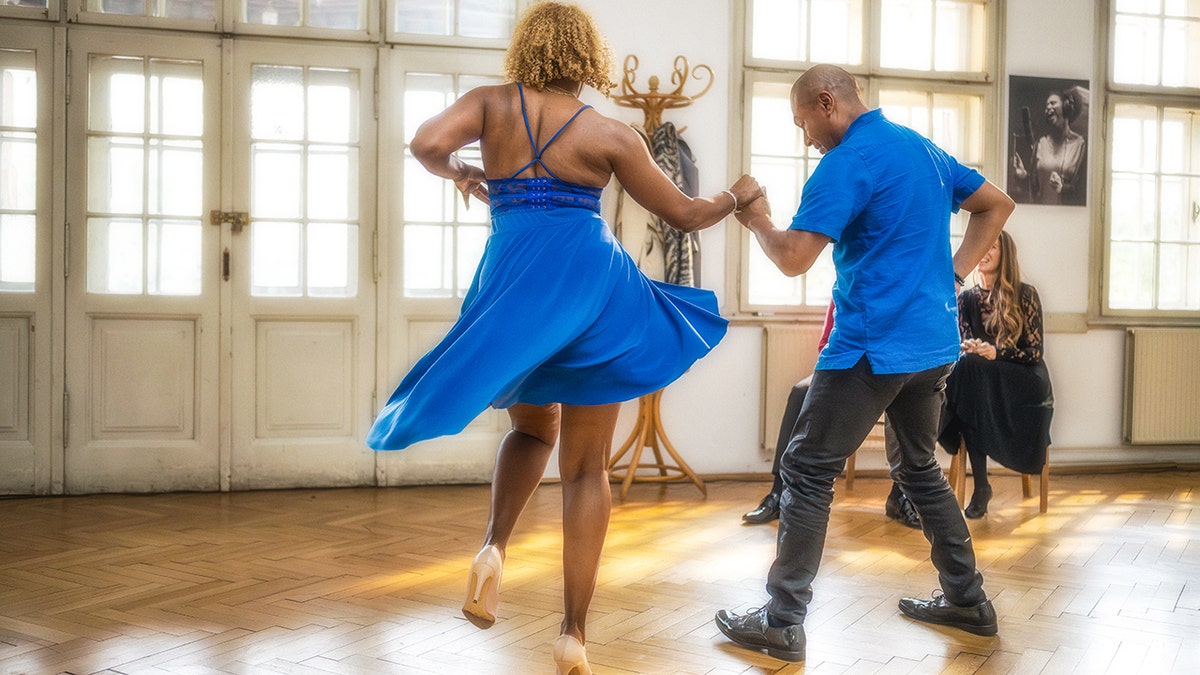Dancing it out can be a great way to recover from chemo.
That’s according to new research from The Ohio State University Comprehensive Cancer Center, which found that dancing the tango can boost neurological recovery in cancer patients by reducing lingering symptoms of chemotherapy.
Chemotherapy-induced neuropathy (CIN) is a condition that can occur anywhere throughout the body, but mostly impacts the hands, feet and limbs, according to an OSU press release.
EXPERIMENTAL WOMEN’S CANCER DRUG BOOSTS SURVIVAL RATES IN NOTABLE STUDY
Eighty percent of breast cancer survivors experience CIN, which can cause pain, falls, difficulty walking and diminished quality of life, experts say.
Previous data showed that music and exercise can “help prevent neurologic degeneration,” the researchers said. (iStock)
The DAANCE study assessed how the adapted Argentine tango can help restore mobility and alleviate symptoms like numbness, burning, tingling and loss of feeling in these problem areas.
The study, led by Lise Worthen-Chaudhari, PhD, a scientist in the OSU Department of Physical Medicine and Rehabilitation, was funded by the National Institute on Aging.
POPULAR COFFEE ALTERNATIVE MAY HELP PREVENT CANCER, SAY EXPERTS
Worthen-Chaudhari, a former dancer herself, expressed the need for alternative treatment options for CIN.
The researcher and her team designed the study for breast cancer survivors experiencing CIN who had received their last chemotherapy treatment at least three months prior.
“There is hope for recovery from the beating that cancer gives your body, brain and nerves.”
In the early stages of the study, the researchers found that small doses of social dance improved dual-task function compared to larger doses of at-home exercise.
This could be due to the cognitive engagement of dual-task functioning, the researchers concluded.

The Argentine tango, a social dance that originated in Argentina, requires cognitive engagement. (iStock)
Just 20 minutes of social dance a few times a week could begin to “rewire the neuropathways that have been impacted by cancer treatment,” according to Worthen-Chaudhari.
Preliminary data also shows that dancing the tango can lead to improvements in balance, cognitive function, motor function and neuropathy symptoms.
‘I’M A CANCER SURVIVOR – HERE’S WHAT I’VE CUT FROM MY KITCHEN’
The rhythm of the Argentine tango, at 120 beats per minute, helps activate a “neural phenomenon” called “entrainment,” where “two or more oscillating systems (like brainwaves or behaviors) align,” the researchers noted.
Given tango’s ideal cadence, Worthen-Chaudhari told Fox News Digital that it “made sense” that doing the dance a couple of times per week would deliver positive effects of “movement, rhythmic entrainment and social connection, all at once, in a way that promoted recovery more than any of those elements in isolation.”
Pilot data shows that this repetitive, slow music and walking dance help re-map nerves damaged by chemotherapy, she added.
“This work is about helping survivors reclaim their lives and thrive, rather than just survive.”
Other institutions have also reported success in balance and cognition after using adapted tango with Parkinson’s disease patients.
This therapy could help individuals with other conditions, such as diabetes, dementia, neurodegenerative diseases and general aging, Worthen-Chaudhari noted.

In addition to cancer patients, dancing the tango could also help individuals with other conditions and could relieve general aging effects, the researchers stated. (iStock)
An expanded five-year study will continue to look into dual-task performance, with plans to recruit 140 breast cancer survivors at the OSU Cancer Center.
The researchers will explore whether the effects of tango therapy can be sustained over time to improve movement and cognitive functions.
CLICK HERE TO SIGN UP FOR OUR HEALTH NEWSLETTER
“In essence, this work is about helping survivors reclaim their lives and thrive, rather than just survive,” Worthen-Chaudhari wrote in the release.
“It’s about providing them with a fun, effective way to improve their sensory motor skills and reduce the fear of falling, ultimately enhancing their overall well-being.”

The rhythm of Argentine tango activates “entrainment” in the brain, the researchers said. (iStock)
Worthen-Chaudhari, shared that she was “delighted” to find that tango with a friend could work just as well as exercise to alleviate these symptoms.
“I wanted to know if tango could do more than prevent decline … if it could stimulate neuro-recovery among those trying to recover from neuro-trauma,” she told Fox News Digital.
CLICK HERE TO GET THE FOX NEWS APP
“I’m excited about an option that doesn’t require sweating, such that you have to shower before going back to work or out to dinner.”
For more Health articles, visit www.foxnews.com/health
“In retrospect, I can see that it makes sense, but I was surprised that the results were clear even in an initial study of the idea,” the scientist added.
She assured, “There is hope for recovery from the beating that cancer gives your body, brain and nerves.”




